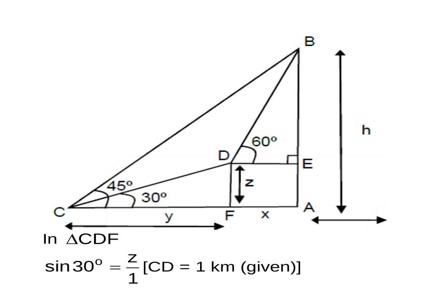Maths
Get insights from 6.5k questions on Maths, answered by students, alumni, and experts. You may also ask and answer any question you like about Maths
Follow Ask QuestionQuestions
Discussions
Active Users
Followers
New answer posted
2 months agoContributor-Level 9
f (x) = sin²x (λ + sinx)
f' (x) = 2sinxcosx (λ + sinx) + sin²x (cosx) = sinxcosx (2λ + 3sinx)
For extrema, f' (x) = 0
sinx = 0, cosx = 0, or sinx = -2λ/3
For more than 2 points of extrema in the interval, sinx = -2λ/3 must have solutions other than where sinx=0 or cosx=0.
-1 < -2/3 < 1 and -2/3 0
This gives λ ∈ (-3/2, 3/2) - {0}
New answer posted
2 months agoContributor-Level 9
Given curves are y = x² - 1 and y = 1 - x² so intersection points are (±1,0). Bounded area =
4∫? ¹ (1 - x²)dx = 4 [x - x³/3]? ¹
= 4 (1 - 1/3) = 8/3 sq. units
New answer posted
2 months agoContributor-Level 9
Let y = (ex)?
ln y = x ln (ex) = x [1 + ln x]
(1/y) (dy/dx) = (1) (1 + ln x) + x (1/x) = 2 + ln x
⇒ dy = (ex)? (2 + ln x)dx
∫? ² (ex)? (2 + log? x)dx = [ (ex)? ]? ² = (2e)² - (1e)¹ = 4e² - e
New answer posted
2 months agoContributor-Level 10
Clearly, ∫ [0 to n] {x}dx = n/2
∫ [0 to n] [x]dx = 1 + 2 + 3 . . . n − 1
= n (n-1)/2
∴ (n (n-1)/2)² = n/2 {10n (n-1)}
Solving, n = 21
New answer posted
2 months agoContributor-Level 10
x? = Σf? x? / Σf? = (10 + 15x + 50) / (4+x)
= (60+15x)/ (4+x) = 15
σ² = 50 = Σf? x? ²/Σf? - (x? )²
50 = (50+225x+1250)/ (4+x) - (15)²
50 = (1300+225x)/ (4+x) - 225
⇒ 275 (4+x) = 1300 + 225x
⇒ 50x = 200 ⇒ x = 4
New answer posted
2 months agoContributor-Level 10
Let P (2cosθ, 2sinθ)
∴ Q (-2cosθ, -2sinθ)
Given line x+y-2=0
∴ α = |2cosθ + 2sinθ – 2| / √2
β = |-2cosθ - 2sinθ – 2| / √2
∴ αβ = √2 (cosθ + sinθ – 1) · √2 (cosθ + sinθ + 1)
= 2|cos²θ + sin²θ + 2sinθcosθ – 1| = 2|sin2θ|
Max |sin2θ| = 1
∴ maximum αβ = 2.
New answer posted
2 months agoContributor-Level 10
Ways of selecting correct questions =? C? = 15
Ways of doing them correct = 1
Ways of doing remaining 2 questions incorrect = 3² = 9
∴ No. Of ways = 15 * 1 * 9 = 135
New answer posted
2 months agoContributor-Level 10
Let a? = xî + y? + zk
î * (a? * î) = (î·î)a? – (a? ·î)î = y? + zk
Similarly? * (a? *? ) = xî + zk and k? * (a? * k? ) = xî + yk
|î * (a? * î)|² + |? * (a? *? )|² + |k? * (a? * k? )|²
= |y? + zk|² + |xî + zk|² + |xî + y? |² = 2|a? |² = 2 (9) = 18
New answer posted
2 months agoContributor-Level 10
Given,
300 = 1 + (N – 1)d
⇒ (N − 1)d = 299
∴ (N, d) = (24,13) is the only possible pair
∴ a? = 1 + 19 (13) = 248 and, S? = (1+248)/2 * 20
= 2490
Taking an Exam? Selecting a College?
Get authentic answers from experts, students and alumni that you won't find anywhere else
Sign Up on ShikshaOn Shiksha, get access to
- 65k Colleges
- 1.2k Exams
- 679k Reviews
- 1800k Answers

